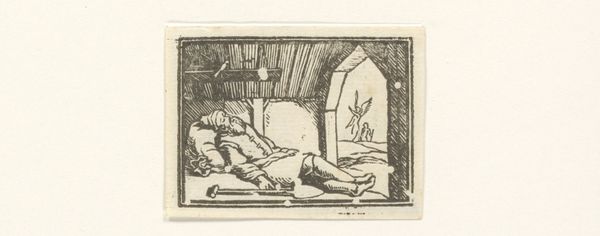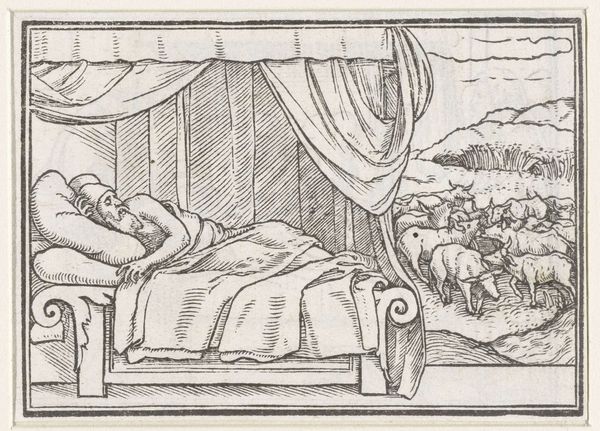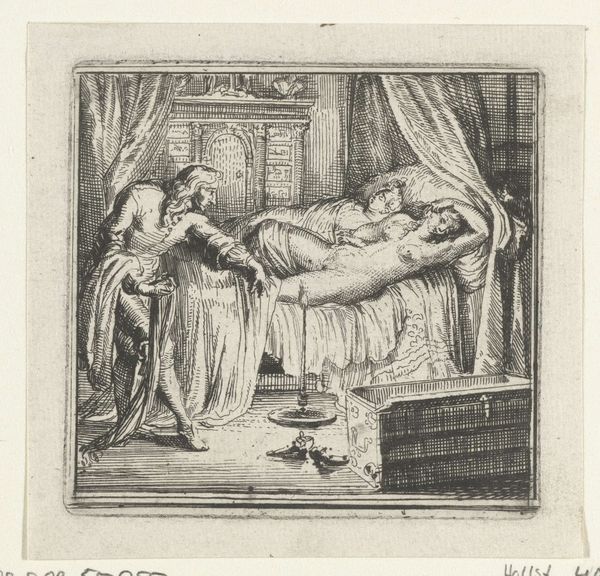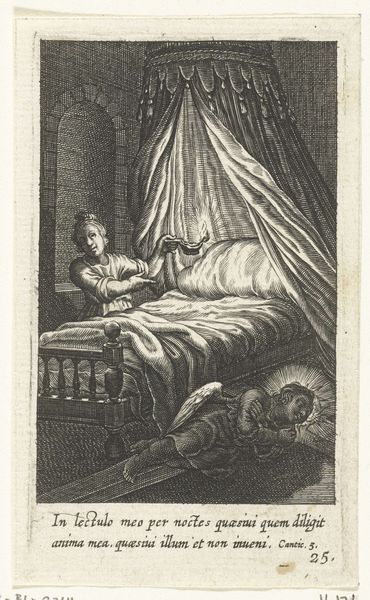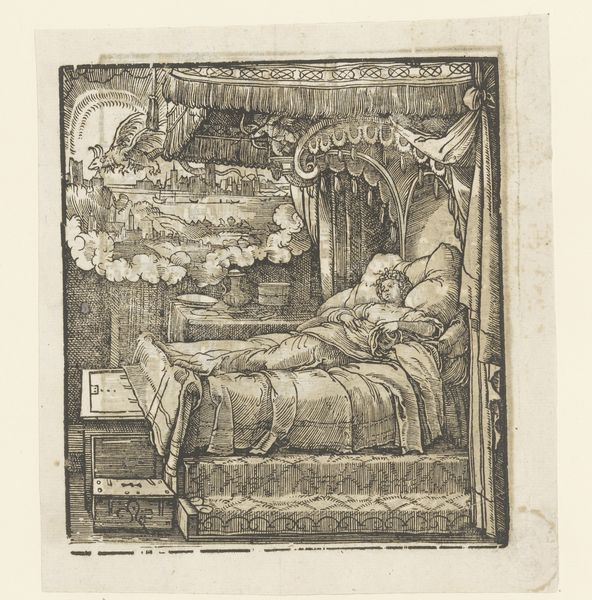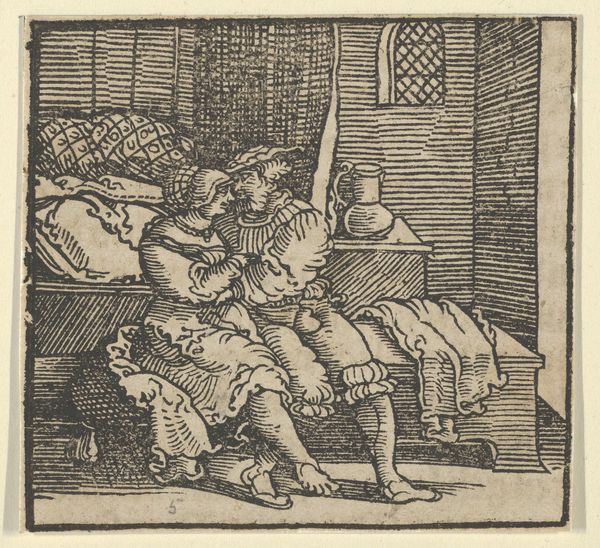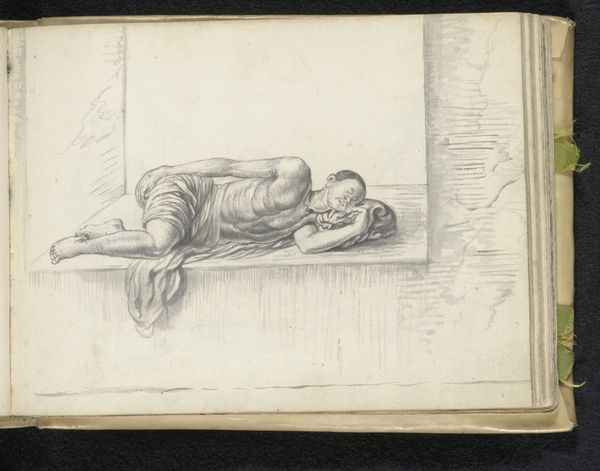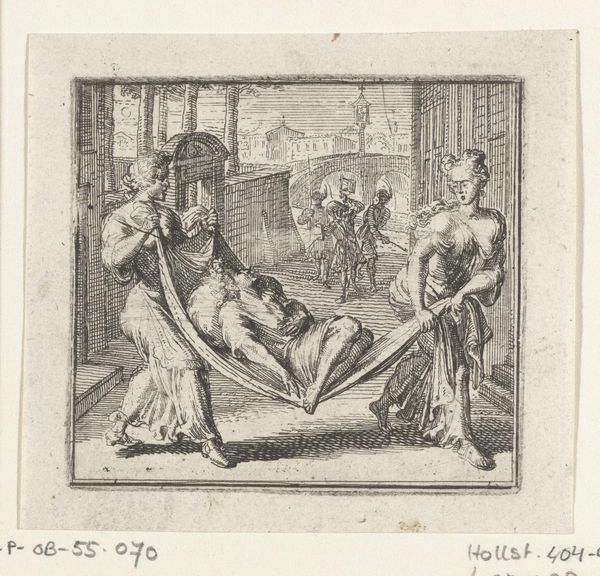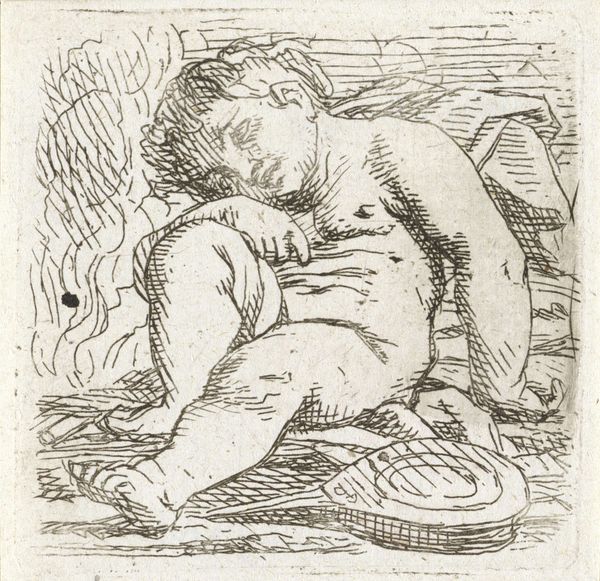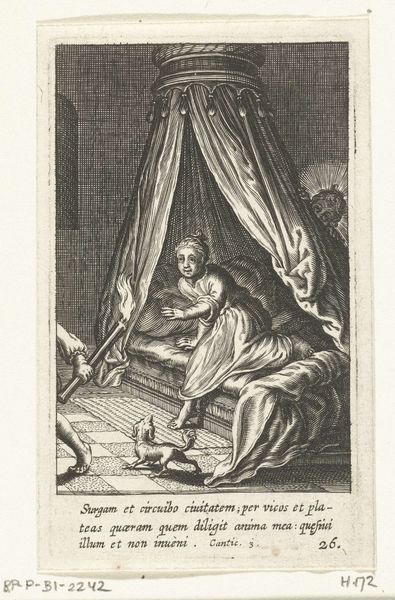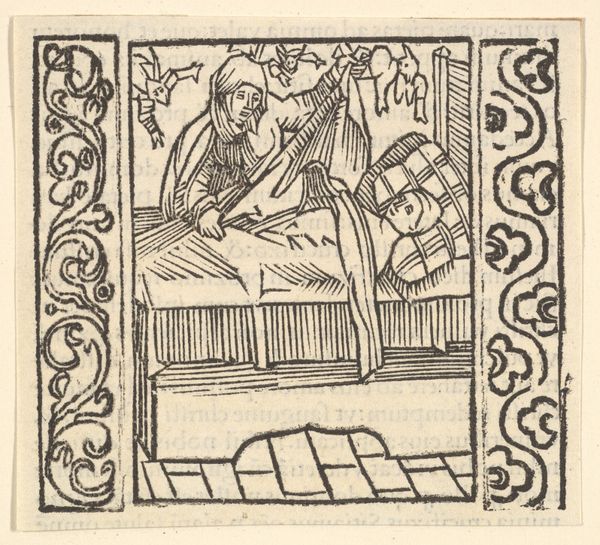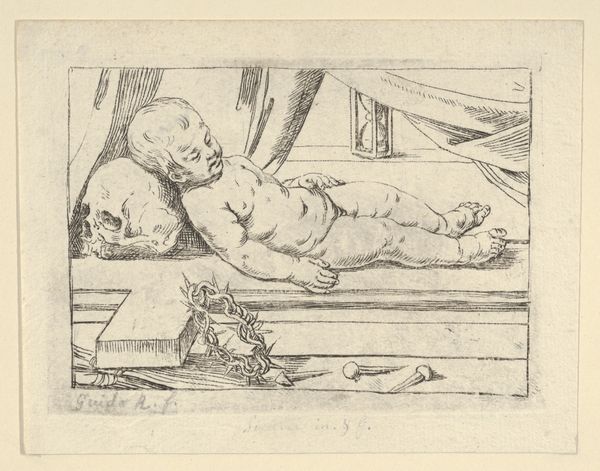
drawing, ink, pen
#
drawing
#
comic strip sketch
#
baroque
#
pen illustration
#
pen sketch
#
personal sketchbook
#
ink
#
ink drawing experimentation
#
pen-ink sketch
#
pen work
#
sketchbook drawing
#
pen
#
genre-painting
#
storyboard and sketchbook work
#
sketchbook art
Dimensions: height 54 mm, width 78 mm
Copyright: Rijks Museum: Open Domain
Editor: This ink drawing, titled "Tobits blindheid" by Dirck de Bray, dates back to sometime between 1635 and 1694. It depicts an interior scene with a sleeping figure. It has quite a simple composition but, what strikes me, is that within this small scene, there's another scene through the archway... almost like a dream. What do you see in this piece? Curator: It is the dream! Look closely – Dirck de Bray is using the angel figure as more than just an angel. Angels operate as powerful cultural symbols, linking the mundane world to the divine. But notice how the figures beyond the arch appear flattened, almost like figures from a memory, distinct from the immediate reality of Tobit's slumber. What do you think is suggested by depicting them with such differing visual languages? Editor: Well, if the sleeping figure is Tobit, then could this flattened style be referring to his blindness? And therefore representing how he sees, or rather *doesn’t* see the world? Curator: Precisely! The dream, a common visual trope, carries heavy symbolic weight. Consider the objects within Tobit’s 'real' space: the hammer suggests physical labor, earthly existence. But the bird perched above? What cultural connotations does that creature hold? Editor: A sense of freedom maybe, or perhaps even prophecy, given its position above him? Is de Bray inviting us to consider a larger narrative, one beyond immediate perception? Curator: I believe so. By juxtaposing symbolic imagery and differing artistic styles, he builds a visual memory palace around a single, significant moment, enriching its depth. Do you find this encourages a shift in how you perceive the work? Editor: Absolutely. Seeing how de Bray uses this symbolic language makes me appreciate the piece more deeply than I initially did. Curator: Me too. It reminds us of art’s incredible ability to evoke complex layers of meaning even through seemingly simple forms.
Comments
No comments
Be the first to comment and join the conversation on the ultimate creative platform.
